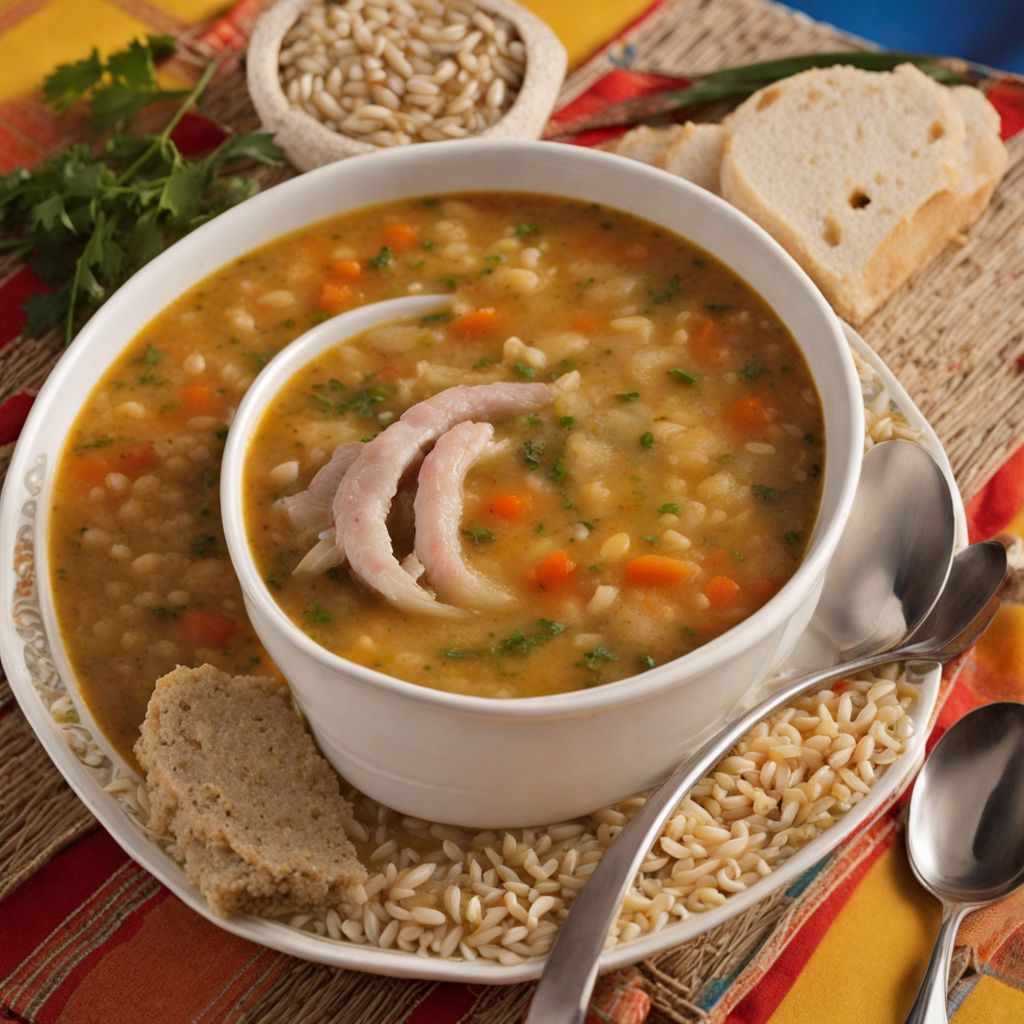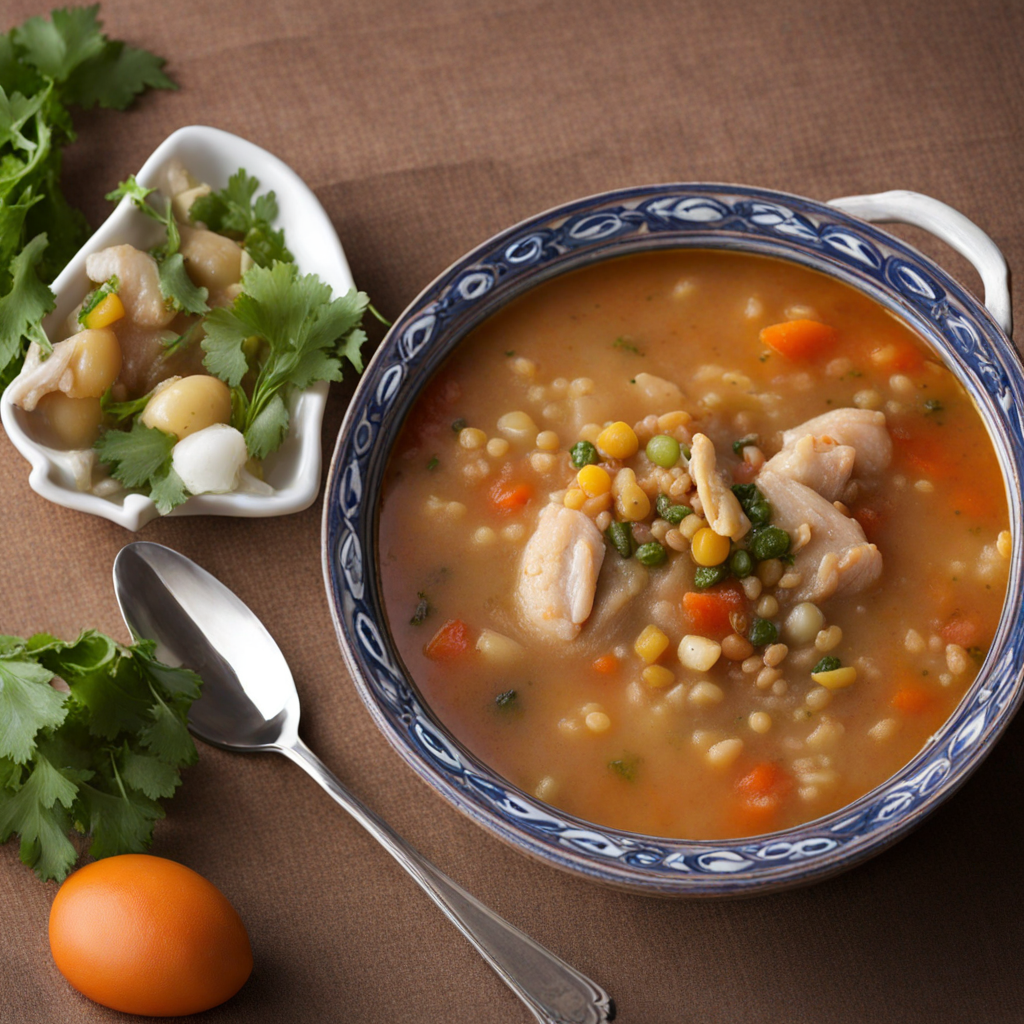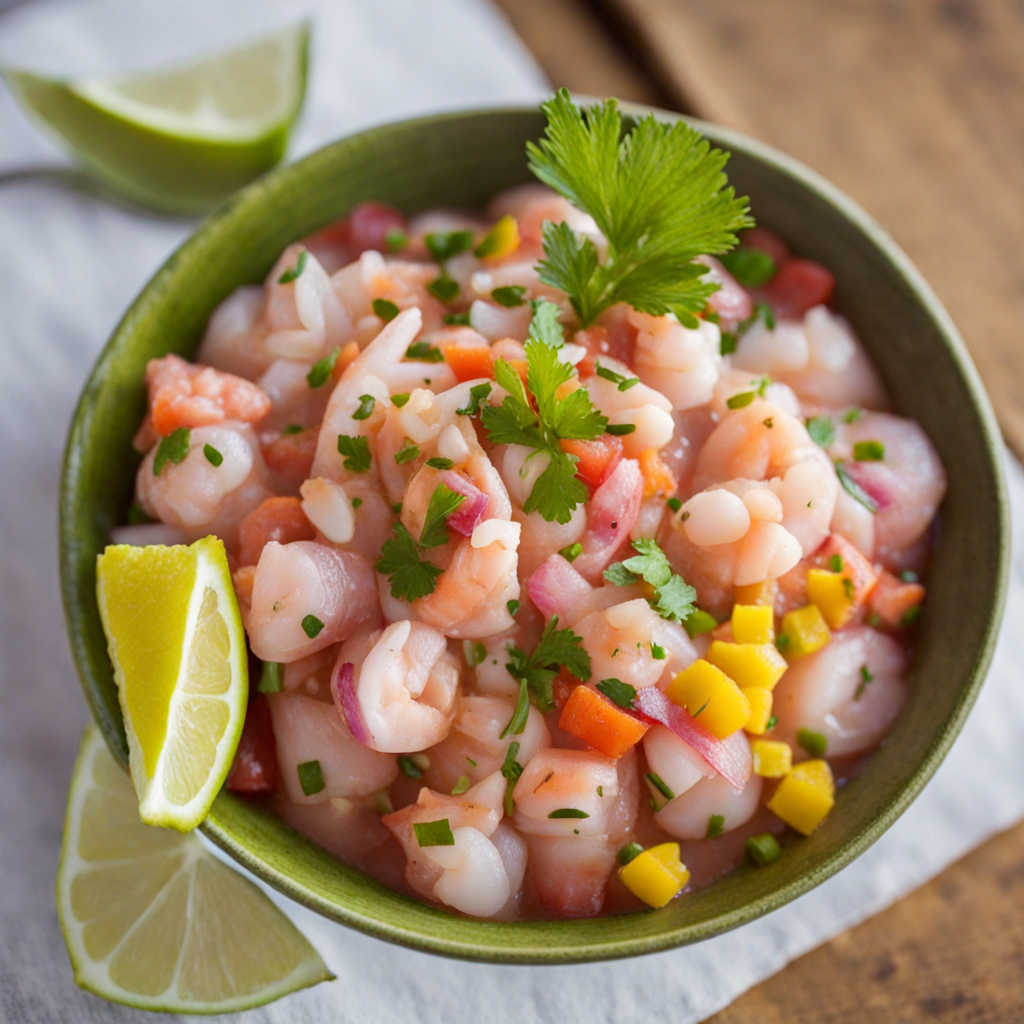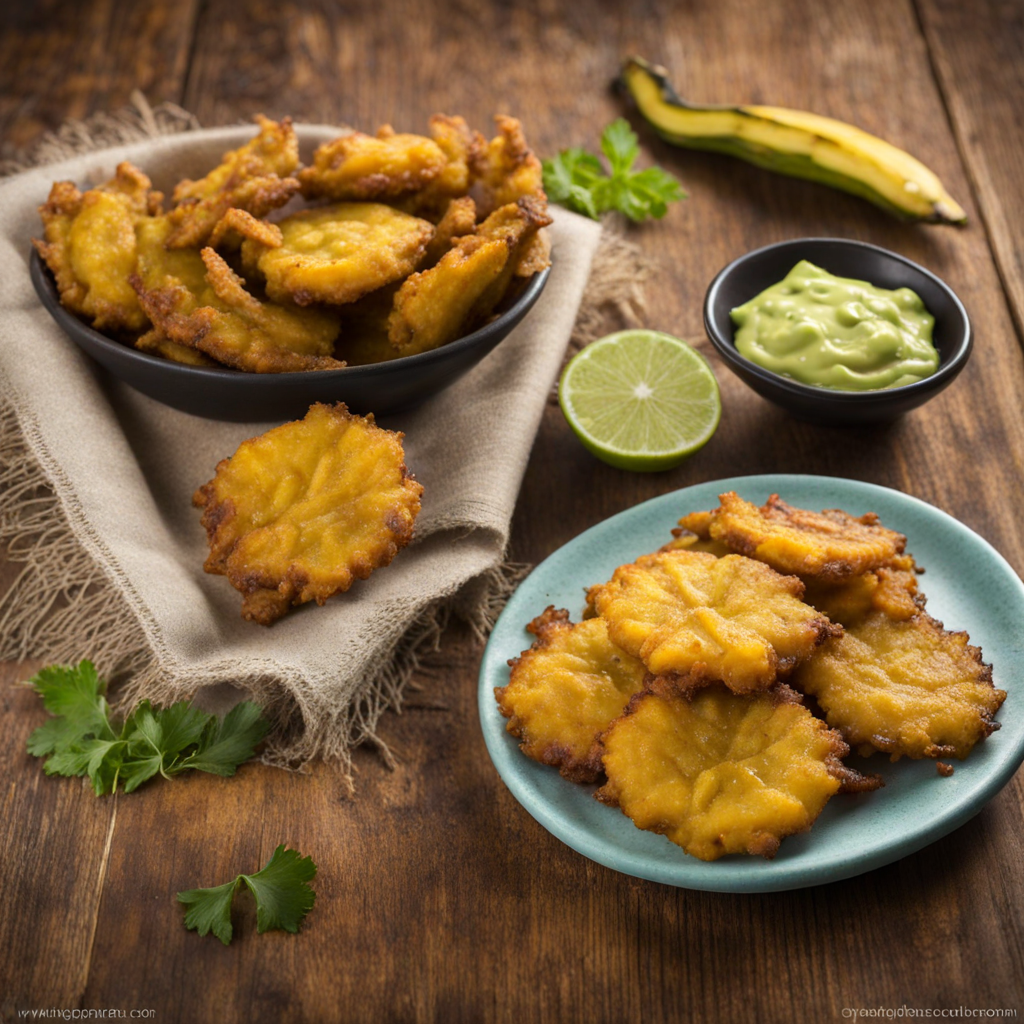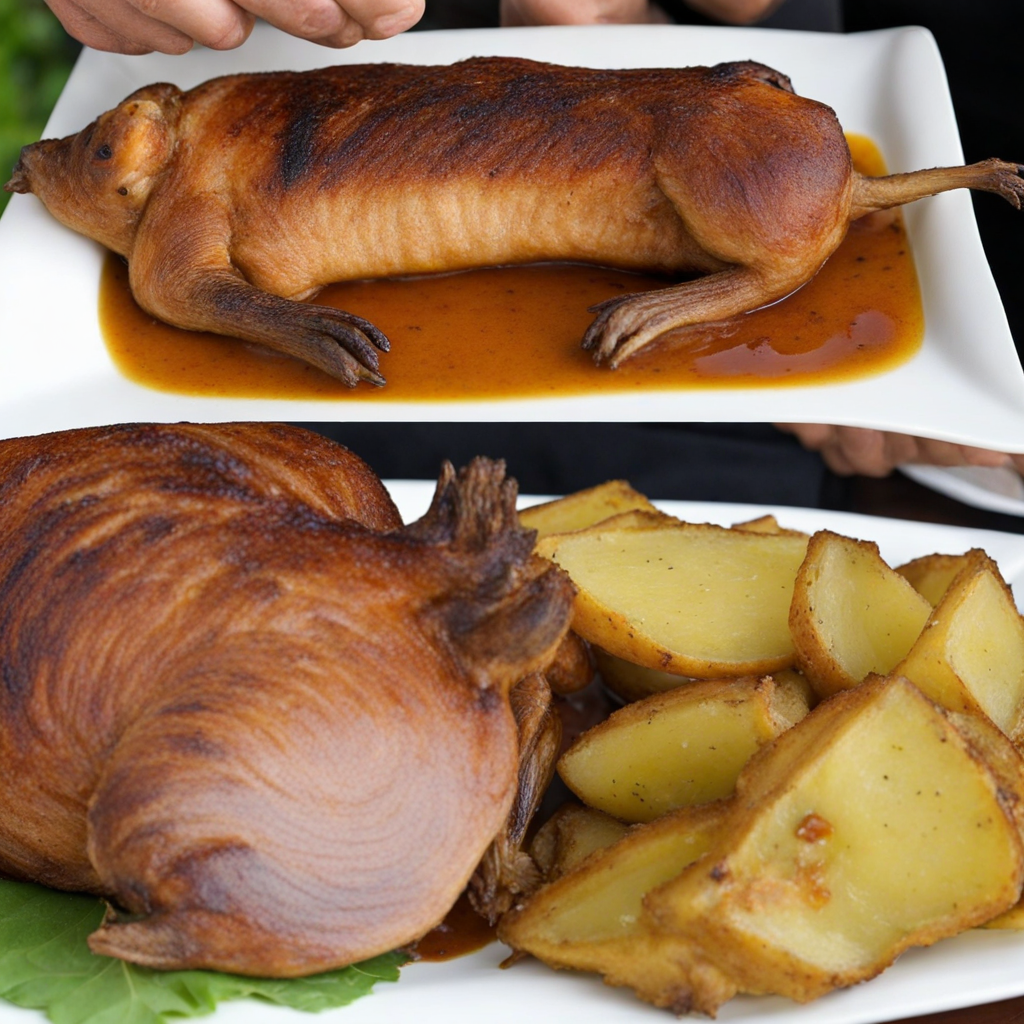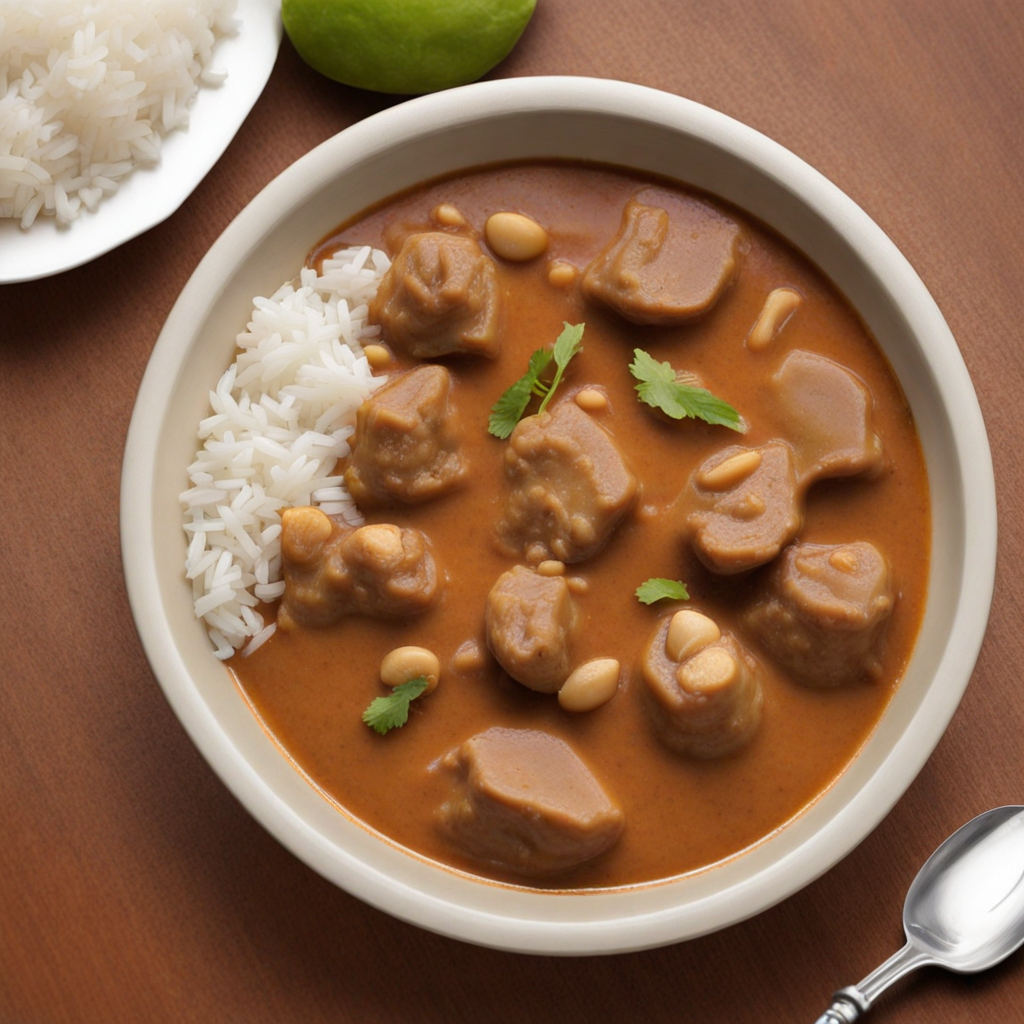Fanesca
Fanesca is a traditional Ecuadorian soup, celebrated for its rich flavors and vibrant colors. This hearty dish is typically prepared during Holy Week, particularly on Good Friday, making it a significant part of Ecuadorian culture and culinary heritage. At its core, Fanesca is made with a blend of grains and legumes, including lentils, beans, and chochos (a type of Andean lupin), which contribute to its creamy texture and nutritious profile. The soup is further enhanced with a variety of vegetables, such as squash, corn, and spinach, creating a delightful medley of flavors reminiscent of the lush Andean landscape. The preparation of Fanesca is a labor of love, often involving a blend of spices and herbs that elevate the dish to new heights. Ingredients like garlic, cumin, and achiote add depth and complexity to the flavor, while a touch of milk or cream provides a luxurious richness. Additionally, a traditional Fanesca is typically garnished with hard-boiled eggs, avocado, and a sprinkle of parsley or cilantro, offering a beautiful contrast in textures and a burst of freshness. Each family may have their own unique twist on the recipe, making it a truly personal and regional dish that reflects the diverse culinary landscape of Ecuador. What sets Fanesca apart is not only its delicious taste but also the communal aspect of its preparation and consumption. Families often gather to make the soup, sharing stories and laughter as they chop vegetables and stir the pot. This cherished dish embodies the spirit of togetherness, making it more than just a meal. When you indulge in a bowl of Fanesca, you’re not just savoring a complex and flavorful soup; you’re also experiencing the warmth of Ecuadorian hospitality and the deep-rooted traditions that have been passed down through generations.
How It Became This Dish
Fanesca is a traditional Ecuadorian soup that holds a special place in the hearts and homes of the Ecuadorian people, particularly during the Holy Week leading up to Easter. This elaborate dish is not only a culinary delight but also a rich tapestry of cultural and historical significance that reflects the confluence of indigenous traditions and colonial influences. Origins The origins of Fanesca can be traced back to pre-Columbian times, where indigenous communities of the Andean region cultivated a variety of grains, legumes, and vegetables. Ingredients such as beans, corn, and potatoes were staples in their diet, highly valued not only for their nutritional benefits but also for their cultural significance. The word "Fanesca" is believed to be derived from the Spanish term for a type of dish made during Lent, but its roots are deeply embedded in the Andean agricultural practices and rituals of the indigenous peoples. With the arrival of Spanish colonizers in the 16th century, the culinary landscape of Ecuador began to change. The fusion of Spanish ingredients and cooking techniques with local indigenous foods gave rise to a unique gastronomic identity. Fanesca, as we know it today, emerged from this blend, particularly as it began to incorporate elements such as cream, cheese, and various spices introduced by the Spanish. Cultural Significance Fanesca is more than a mere dish; it is steeped in tradition and imbued with meaning. It is traditionally prepared during Holy Week, particularly on Good Friday, as a way to honor the Passion of Christ. The soup is a symbolic representation of the 12 apostles, with each type of bean in the dish corresponding to one of the apostles. The variety of ingredients also reflects the richness of the earth and the bounty of the harvest, serving as a reminder of the importance of gratitude and community. The preparation of Fanesca is often a communal activity, bringing families together to cook and share stories. Each region of Ecuador has its own variation of the dish, influenced by local ingredients and family recipes passed down through generations. This regional diversity contributes to the soup's cultural significance, as it embodies local identities and fosters a sense of belonging. Moreover, Fanesca is a representation of the mestizo culture of Ecuador, where indigenous and Spanish influences converge. The dish serves as a culinary bridge, connecting people from different backgrounds and fostering unity during a time of reflection and spirituality. Ingredients and Preparation The classic recipe for Fanesca varies, but it typically includes a mix of grains such as lentils, peas, and beans, alongside vegetables like squash, potatoes, and spinach. The soup is thickened with a blend of ground nuts and spices, often featuring a base of milk or cream to create a rich, velvety texture. In preparing Fanesca, families often engage in a ritualistic process, from the selection of ingredients to the cooking method itself. Traditionally, the beans and grains would be soaked overnight, and the soup is cooked slowly to allow the flavors to meld together. Some families may add a touch of their own flair, incorporating ingredients such as fish (notably salted cod), which is a nod to the Catholic practice of abstaining from meat during Lent. The final presentation of Fanesca is equally important. The soup is typically garnished with hard-boiled eggs, avocado slices, and a sprinkle of parsley, creating a vibrant and colorful dish that appeals to both the eyes and the palate. Development Over Time As Ecuador has evolved politically, socially, and economically, so too has Fanesca. In the early 20th century, the dish began to gain national prominence, transcending its origins as a regional specialty to become a symbol of Ecuadorian identity. The rise of tourism and globalization in the latter half of the century further contributed to its popularity, as Fanesca became a beloved dish among both locals and visitors seeking to experience authentic Ecuadorian cuisine. The 21st century has witnessed a renewed interest in traditional foods, with chefs and home cooks alike experimenting with modern interpretations of Fanesca. While some maintain the traditional recipe, others have sought to innovate by incorporating contemporary techniques, alternative ingredients, or even vegetarian variations to cater to changing dietary preferences. This evolution reflects a broader trend within Ecuadorian cuisine, where traditional dishes are being reimagined while still honoring their historical roots. Moreover, Fanesca's prominence during Holy Week has led to community events and festivals centered around the dish. In cities like Quito, Fanesca festivals attract locals and tourists alike, showcasing different versions of the soup and celebrating its cultural significance. These events not only highlight the culinary heritage of Ecuador but also promote social cohesion and community bonding. Conclusion Fanesca is more than just a soup; it is a living symbol of Ecuadorian culture, reflecting the nation’s rich history, diverse ingredients, and the blending of traditions. As families gather to prepare and enjoy this dish during Holy Week, they partake in a ritual that connects them to their ancestors and to one another. The evolving nature of Fanesca mirrors the resilience and adaptability of Ecuadorian culture, ensuring that this cherished dish will continue to be a staple of celebration and communion for generations to come. Through the lens of Fanesca, we can appreciate not only the complexity of Ecuadorian culinary traditions but also the profound ways in which food serves as a vessel for cultural expression, unity, and identity. Whether enjoyed in a humble home or a bustling festival, Fanesca remains a testament to the enduring power of food to nourish both the body and the spirit.
You may like
Discover local flavors from Ecuador


